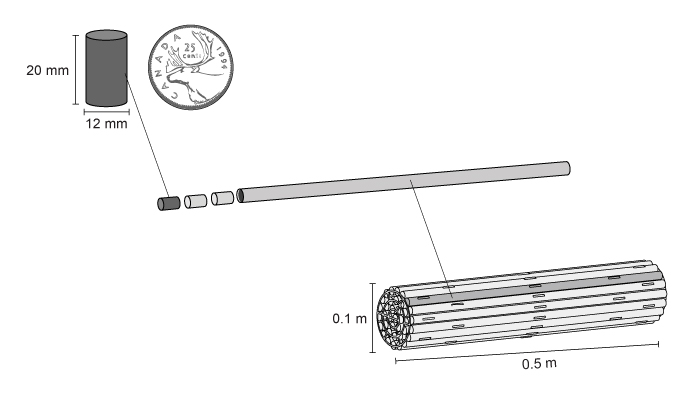By: Laval Namaypoke
“Canada’s plan for long-term management of used nuclear fuel is known as Adaptive Phased Management (APM). This plan emerged from a three-year dialogue with Canadians between 2002 and 2005. It reflects best international practice and features considered important by citizens. The federal government selected APM as Canada’s plan in June 2007”.
– Nuclear Waste Management Organization (NWMO) Safe and Secure Transportation of Canada’s Used Nuclear Fuel book.
Our community, Whitefish Bay F.N, is part of Canada’s plan for long-term management of used nuclear fuel. NWMO is already in the process of the plan in our area. We are currently being educated about what the NWMO project is, what the plan is, and how the plan and the nuclear fuel are safe. Another thing we are working on is bringing awareness to the project. When’s the last time you heard about Adaptive Phased Management? I am here to learn more about the project and to share all I can with my community. Let’s all learn a little bit more each day, my fellow peoples.
What is used nuclear fuel?
“Nuclear reactors in Canada are fuelled by natural uranium. The uranium is formed into ceramic pellets made from uranium dioxide powder and encased in zircaloy tubes called fuel pencils. These are welded together into bundles the shape of a fireplace log. Each bundle weighs approximately 24 kilograms. Each bundle is made of a strong, corrosion-resistant metal, called zircaloy”.
The Nuclear Fuel Pellet
What I learned is that Fuel Pellets are made from uranium dioxide powder, baked in a furnace to produce a hard, high-density ceramic. Ceramics do not readily dissolve in water and are resistant to wear and high temperatures.

The Fuel Pencil
A fuel pencil is like armour protection – in my head anyway. Fuel pellets are contained in sealed zircaloy metal tubes, called pencils. These are welded together into a cylindrical bundle. I have one bundle in my office! It’s so cool to see what they actually look like. Pay a visit to your local Naotkamegwanning Band Office and check one out, if you’re super curious! (Ask to see NWMO workers)
The Fuel Bundle
Each bundle is composed of fuel pencils and is made of a strong, corrosion-resistant metal, called zircaloy. Fuel bundles are roughly the size of a fire log and weigh approximately 24 kilograms. Before being loaded into a reactor, the radiation hazards associated with unirradiated fuel bundles are relatively low. Radiation dose from unirradiated fuel bundles is in the order of 0.05 mSv/h. When operational in a nuclear reactor, each fuel bundle can generate enough electricity to power up to 100 homes per year!
I thought the same thing any other human being would think: “What are the dangers?”. A lot came to mind, like maybe the nuclear fuel will fall and break, maybe the transports will crash and the nuclear fuel will take damage, maybe the fuel won’t be safe underground and in the future. But all of my concerns were answered over time the more I attended NWMO meetings, read up about it, and spoke more with the people who work with and alongside the Nuclear Waste Management Organization. Canada and the people of this project’s main focus is the safety of every citizen The plan for long-term energy will be 100% safe for our kids, our kids’ kids, and so on. I, Laval, will be here to share all that I can with my community on our country’s future for long-term management of nuclear fuel.
Information gathered from: https://www.nwmo.ca/

